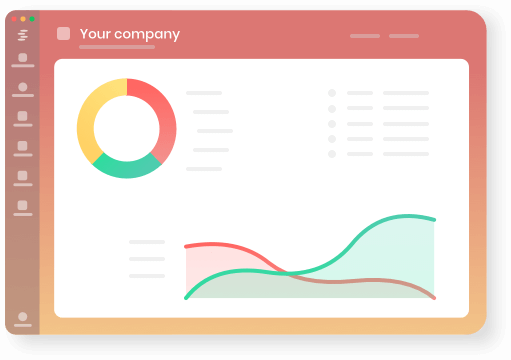Measure Team Productivity With 7 Simple Steps
There are many ways to make yourself look busy at work. But busy doesn’t always equate to being productive. As an example, let’s start with Email. It’s a hugely significant piece of modern business technology allowing various business strands to communicate instantly without dependence on location.
But in the 25 years since we first started registering our Compuserve and AOL addresses, we haven’t come up with a single bullet-proof way to gauge email’s effectiveness. When we hit ‘send’, we don’t even have a fail-safe way of knowing whether the recipient reads our message, let alone whether it makes any measurable impact on them. In fact the latest figures suggest that one in five marketing emails won’t even get opened.

This encapsulates the difficulty we have in measuring modern employee productivity. If a central piece of modern business technology doesn’t even have a clear benchmark, how can we hope to gauge the progress of the people who use it?
In this article, we’re going to give you a series of basic tips to help you negotiate this eternal problem, and create productivity targets which will in turn improve your team’s goal-setting and time management. Productivity-measuring will never be an exact science, of course, but we hope that these seven pointers at least provide a starting-point.
1. Establish metrics
For some readers, this might seem like productivity 101. But trust us, it’s an essential consideration for everything that follows.
Metrics are the key numbers you use to measure output, so you’ll need to build a list for your own team. But be warned: these numbers will vary from team to team, even within different departments.

Take marketing for example. those at the early stage of the marketing process, those working at the ‘top of the funnel’, often work on quantity, aiming to reach a certain number of people without necessarily getting a specific result out of them. By contrast those at the bottom of the funnel, the ones who are trying to convince a familiar contact to make a purchase, are more likely to work on quality. When you’re goal-setting for these guys, it’s less about how many people they contact, more about what they achieve through each conversation.
Consider this when laying down your own metrics. Think about the specific needs and objectives of your team, then tailor your list accordingly. If you’re running a consumer business, you might want to consider metrics such as customer retention, cost per acquisition and lead response time (the amount of time it takes to follow up on each prospect).
2. Think Quality, Not Quantity
Let’s consider email again, because it’s a really interesting topic when one considers productivity.
The typical employee sends over 40 emails a day. But how many of these messages actually impact the business and make a difference to its bottom line? The answer is often very few. In fact many employees send emails without needing to, wasting everyone else’s time and productivity in the process. It’s a frustrating business habit most of us can relate to.
So it’s important to go beyond the core numbers when measuring your team’s performance. Don’t count the number of calls they make or mailouts they send; think instead about how many of these contacts actually make a positive contribution to the business.

Otherwise, it’s all too easy for your team to switch off and concentrate on box-ticking, which will dilute their enjoyment of work and feed into a number of sloppy habits.
3. Think Big Picture
You might have a team which is hitting its immediate productivity targets, but if they’re unhappy in your working environment and are thinking about leaving, that’ll count for nothing in the long-term. The mythical ‘War for Talent’ is now a daily reality, as employees enjoy more choice than ever before. If we want to succeed in this ruthless environment, we need to consider our employees’ overall happiness when gauging their productivity levels.

So when you’re building your programme of metrics, think about employee turnover. About sick rates. About the amount of overtime they punch in every week. These factors are just as important as the customer-facing metrics, as they allow you to build a workplace that will last for the long-term.
For example, if your employees are doing hours of overtime, they’ve likely slipped into bad habits and are getting their time-management all wrong, which reflects a poor business environment.
4. Set Measurable KPIs
Once you’ve mapped out all your metrics, it’s time to condense them into a series of key performance indicators, or KPIs. These are measurable targets that can be applied to each individual team member and assist in both individual and corporate goal-setting.

When mapping out your KPIs, we’d advise you to work backwards from the final target you want your employees to achieve. Picture your final destination, and give them a series of milestones to get there. And make sure they’re achievable; if you set the bar too high, you risk demoralising your team and creating unnecessary internal friction.
5. Be Clear With Your Team
Once you’ve set your productivity KPIs, make sure you share them with your team in a clear, interactive way. Invite each individual, or group, within your team to a face-to-face meeting (Google Meet is great for remote working teams) and clearly explain the rationale behind establishing the targets.

When you sit down with your people, don’t just give them the target. Give them a roadmap to achieving the target as well, with some basic tips to help them meet their objectives. It’s really important to give them clear advice to help with their goal-setting and time-management (Serene, we’d just like to point out, is designed to assist in both areas, and it’s particularly helpful for those who work remotely).
6. Hold Regular Reviews
We’d advise you to establish regular meetings with your team to discuss their progress towards their KPIs. Again, if you run a remote team, videoconferencing is better than email.
But if you feel an individual team member’s productivity is drifting and they’re sliding into unproductive habits, don’t be afraid to hold an ad hoc catch-up where you can invite questions from the person concerned and find out why their performance is dipping.
7. Keep Reviewing Targets
Metrics, and KPIs, are very much a moving target. Ten years ago, applications such as Instagram and Snapchat barely existed; now they form a crucial part of our everyday reality and a key success factor for many businesses.

So it’s important to keep reviewing your metrics and KPIs. Set yourself a regular period to go through all of them, and make sure you add new objectives in response to emerging technologies that impact your business. At the same time you can discard the metrics and KPIs which are no longer relevant or haven’t made the impact you expected.









